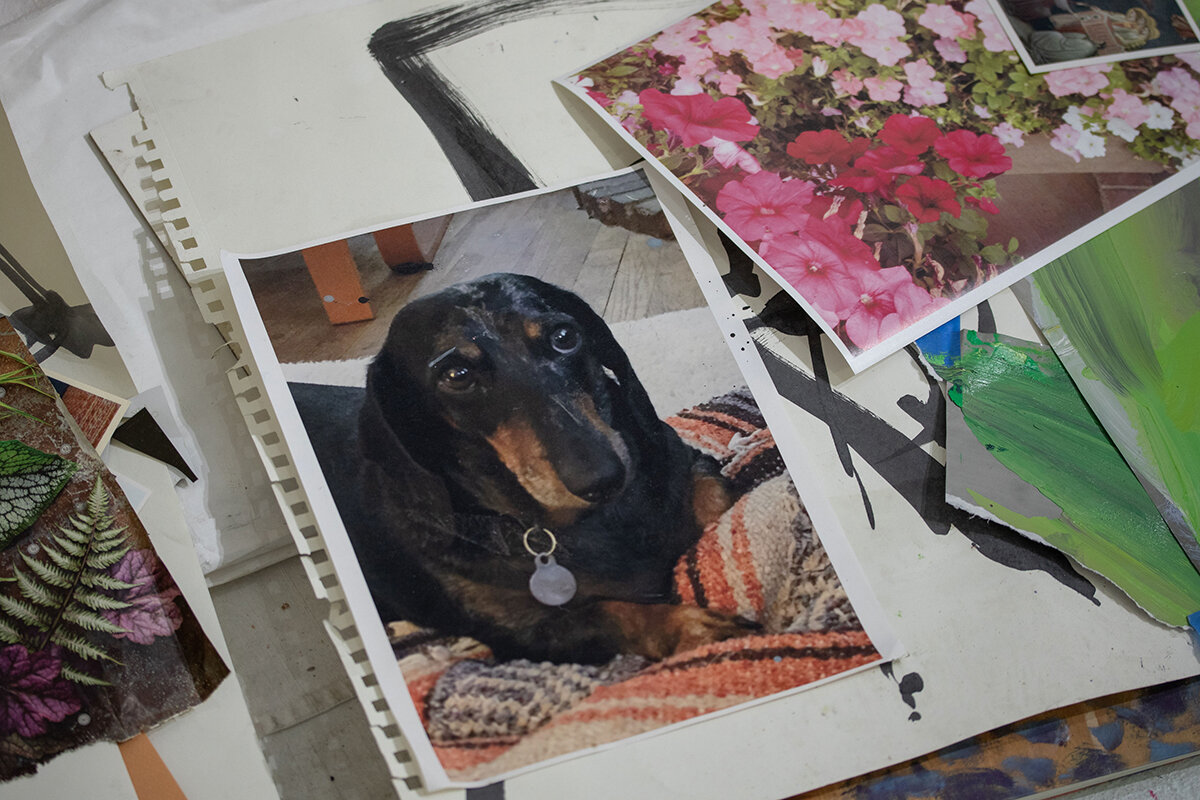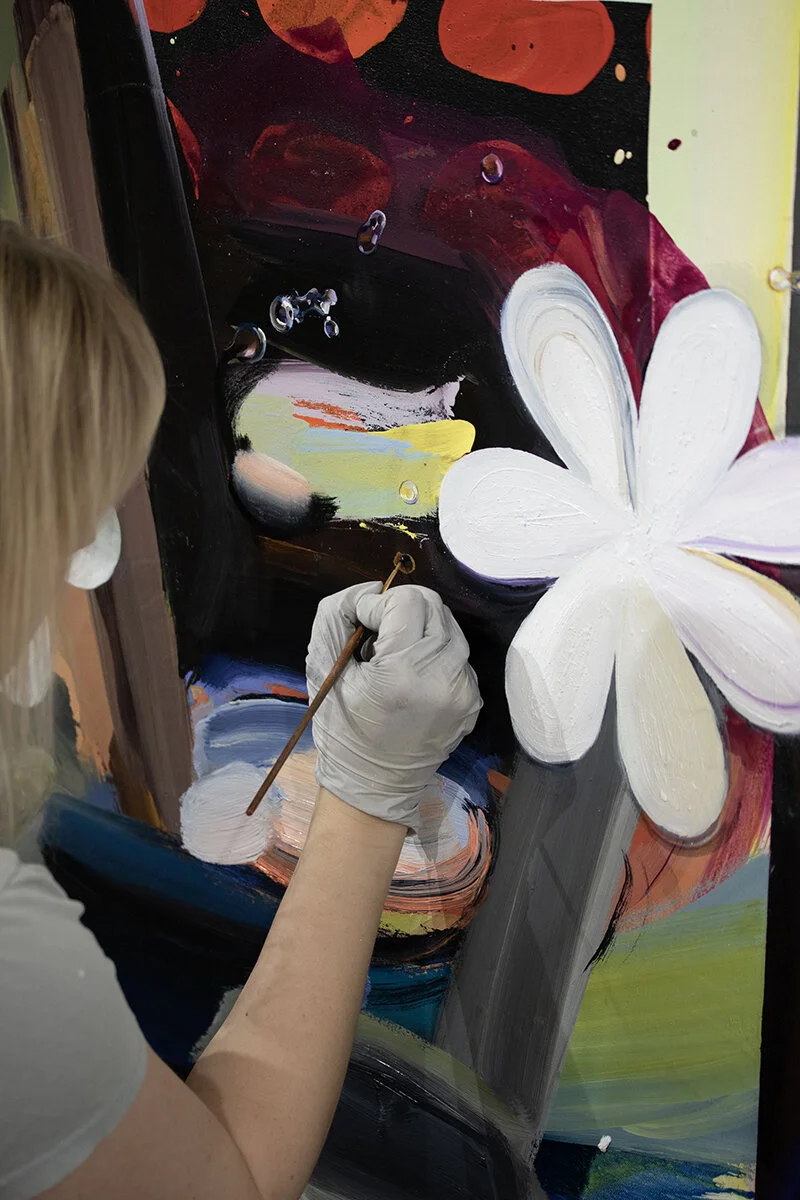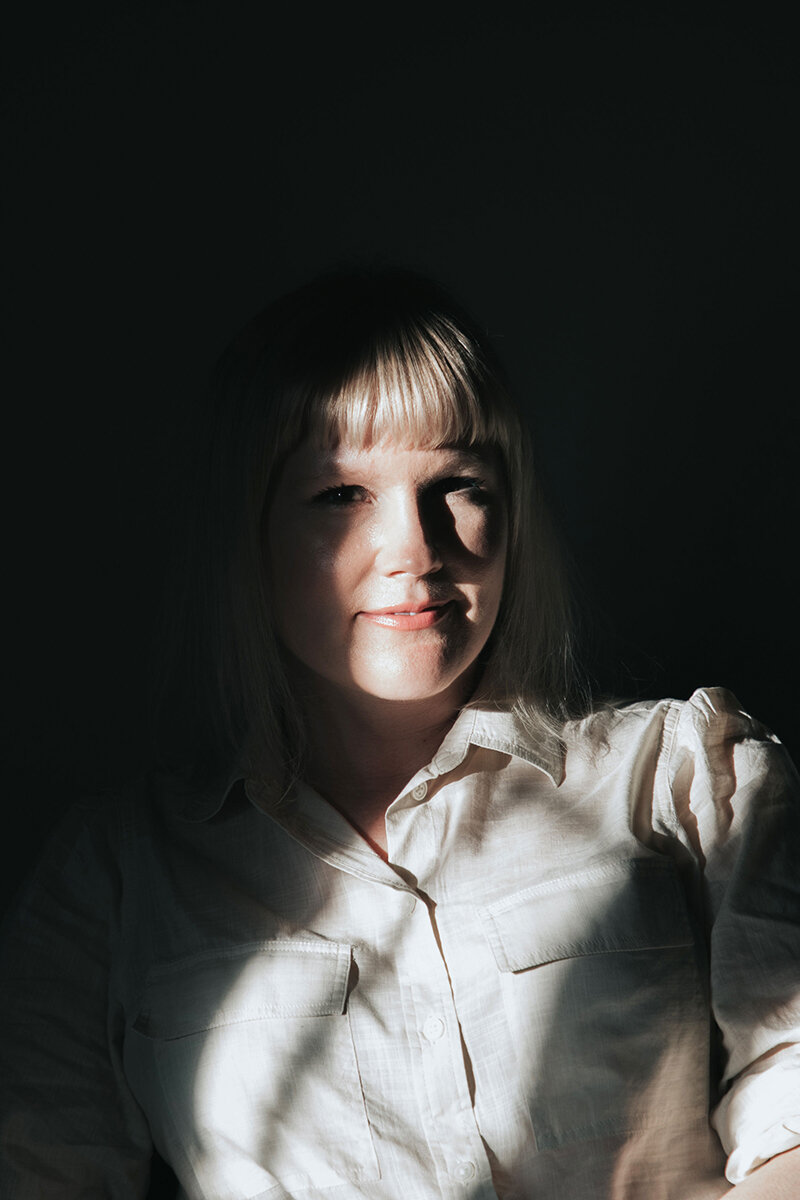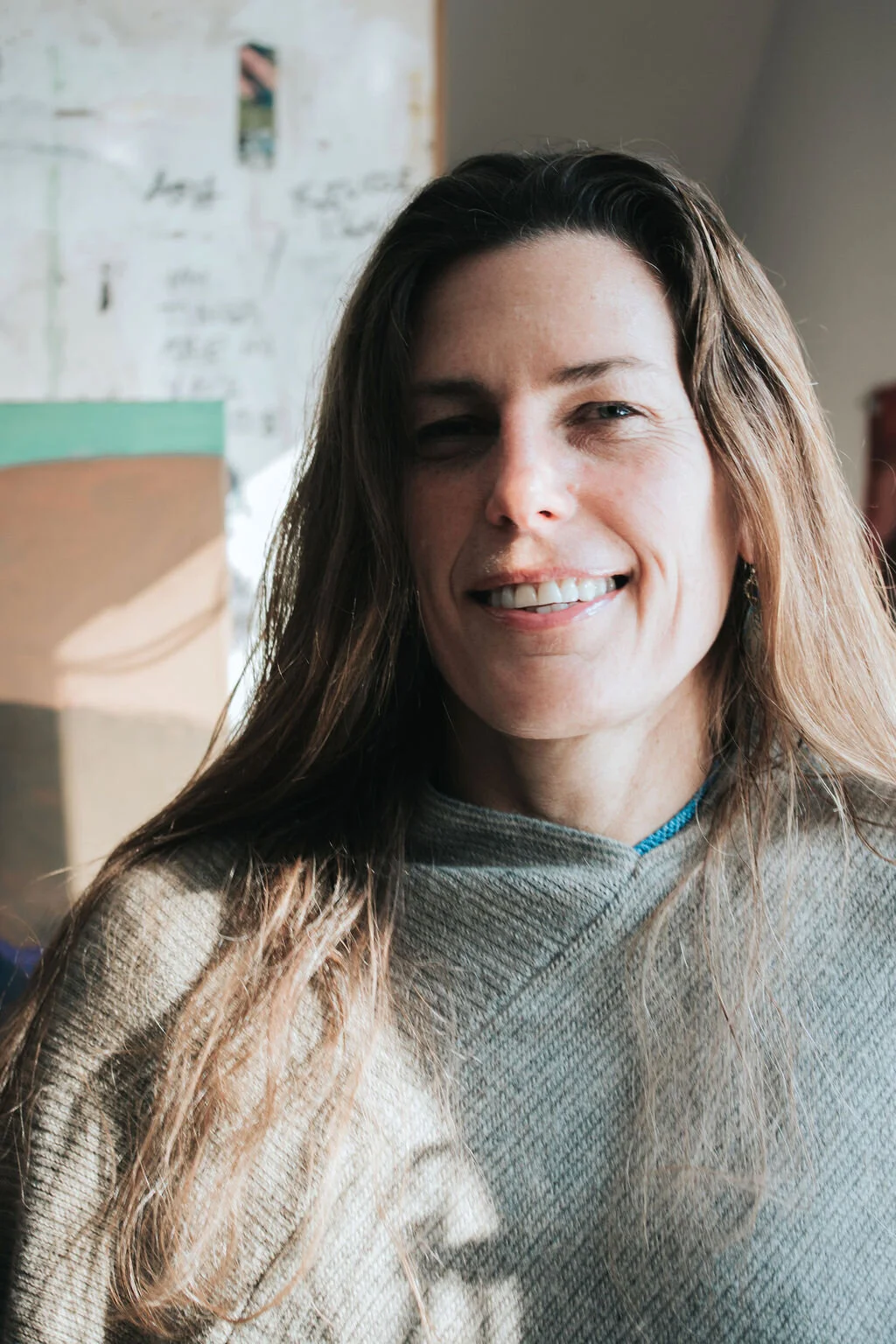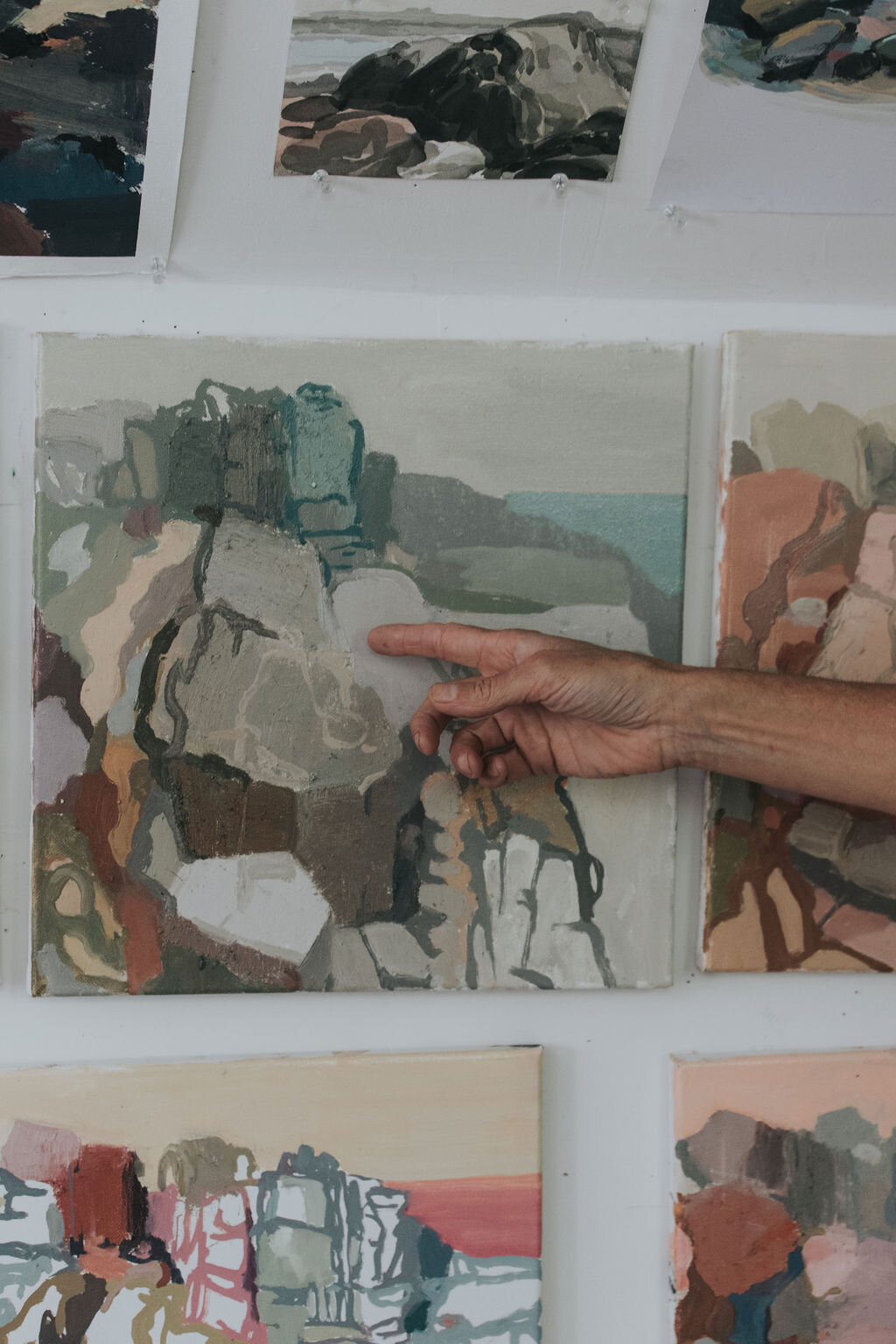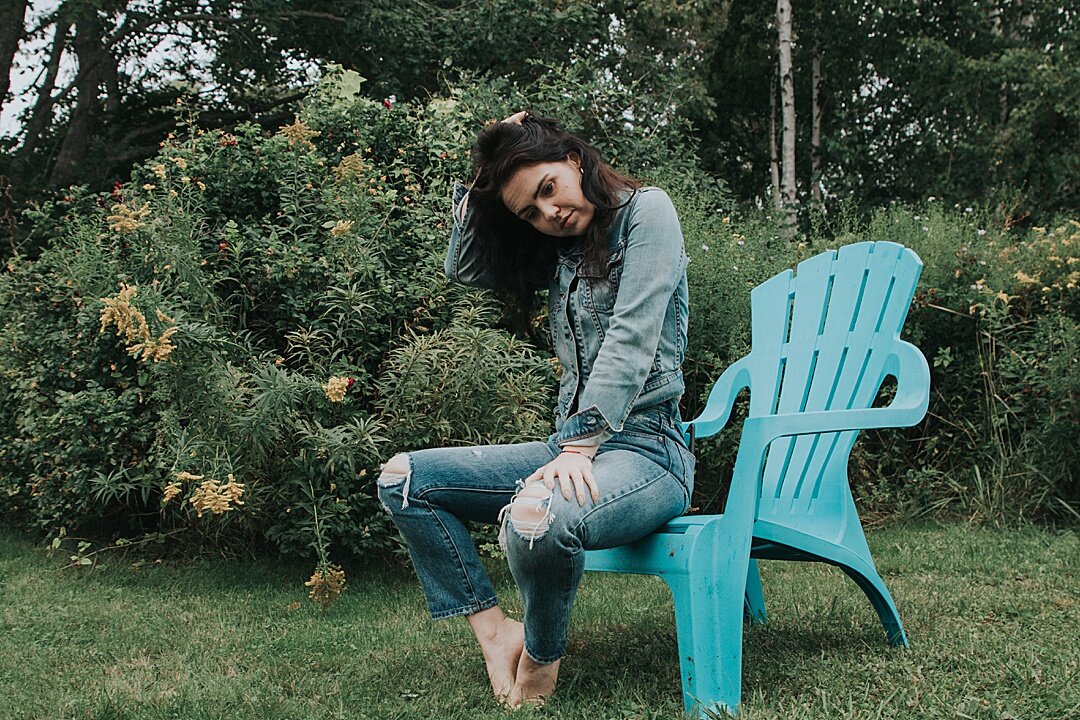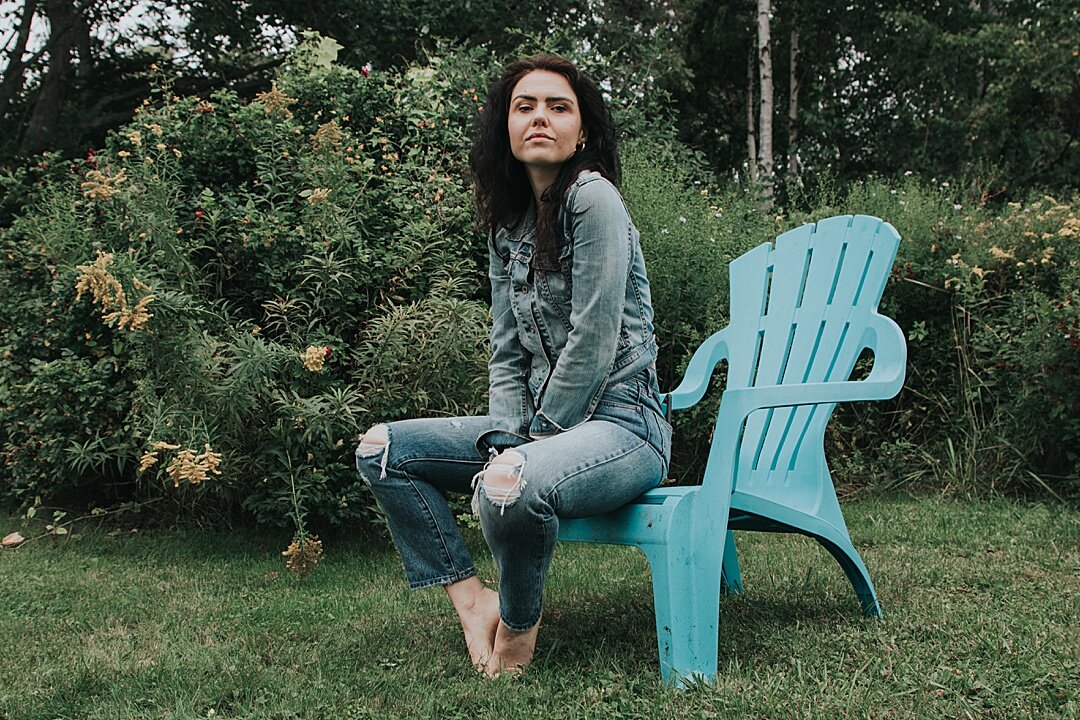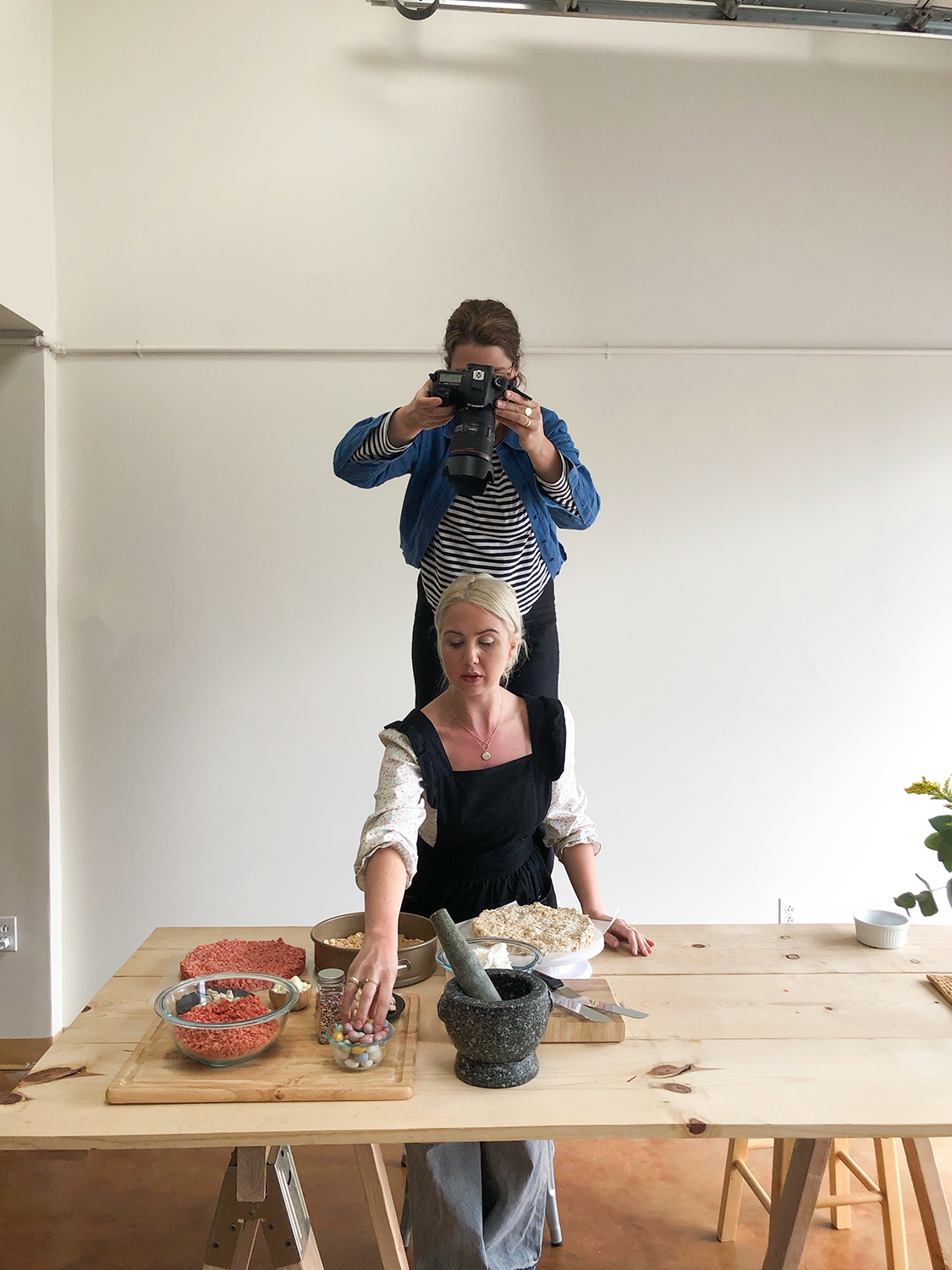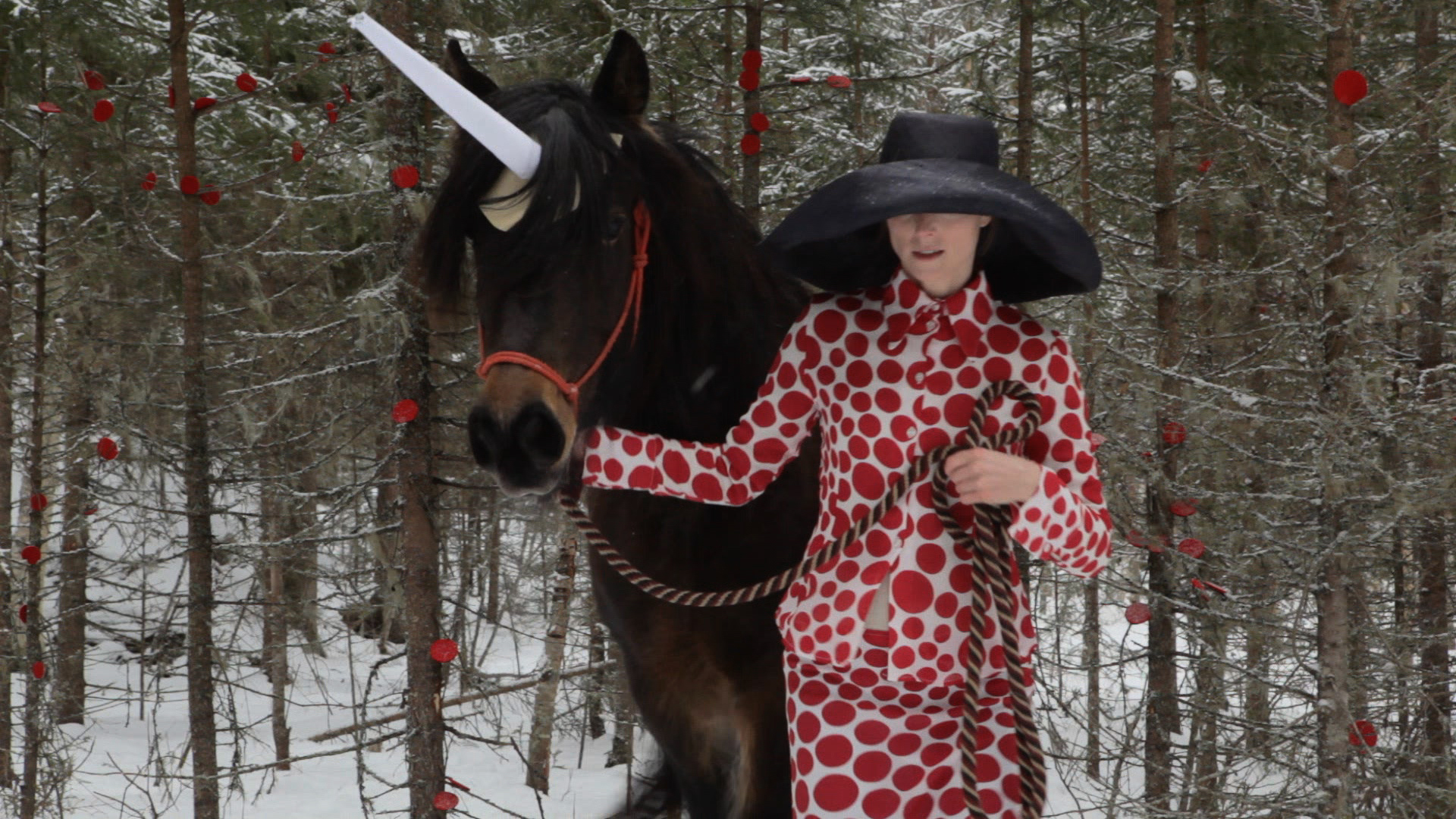It’s been ten years since painter Raychael Stine and I had studios next to each other in Chicago. I met Raychael in graduate school at the University of Illinois at Chicago, where we were both pursuing an MFA in visual arts. Our studios were both off of the large drawing classroom on the fourth floor, plain unassuming doors that led beyond to artistic chaos and big city views. We stayed in touch, and now both live in New Mexico where Raychael is an Assistant Professor of Painting and Drawing at the University of New Mexico in Albuquerque.
I visited Raychael at her painting studio on UNM’s campus and later her home, back in February, and she showed me what she was working on. Our conversation took place before the pandemic hit in March, so her studio has shifted a bit as she is now working from home. I loved getting the chance to visit her studio. It’s been wonderful to see her paintings evolve. Find Raychael online at www.raychaelstine.com and instagram @rayrayandbertie, and read on for our conversation about Raychael’s paintings and practice.
Raychael’s studio
Becca Grady: Can you introduce yourself and your work?
Raychael Stine: I’m a painter and I mostly paint extremely colorful abstractions that take a variety of languages of paint and kind of shove them together. There are some stylistic approaches that would suggest the light underneath something or perhaps the shadow behind another painting. So, there are some trompe l’oeil aspects but then there’s also a lot of expanded and exploded gradients that turn into little nugget chunks, and they kind of all come together and make a dog or some kind of physical culmination of a sort of secret dog. You don’t see the dog right away, they kind of come together later to show the dog. But there’s a variety of painting that I do. And then I have a big wide language around those words that I use. Like jammers and yows, and vision paintings. Jammers and yows are kind of spirit dogs but really, they’re just paint shoving up against other paint. So, jammers is like jamming of different kinds of space and material and pictorial information together and then a yow is sort of a traditional word for a spirit dog, like the Hound of the Baskervilles or like Black Shuck or any of these kind of apparitions that people talk about out on the moors.
BG: Got it. What is Black Shuck?
RS: Black Shuck is a story from Yorkshire, about a specific dog spirit out on the moors around a certain town. If you see Black Shuck at night, he’s got glowing red eyes and he’ll drag you to hell. But I am interested in these spirit hounds because there is also one story about a hound, a woman and two dogs called the Night Mallt or Matilda of the Night. Some people in the town think that the Night Mallt is this screaming terrible witch banshee with two black dogs with glowing red eyes. If you see her out, you’re going to die, and she’s going to take you to hell. But then other people in the same town or right around there think that the Night Mallt or Matilda of the Night is actually this benevolent spirit goddess guide who has two giant white dogs who will get you home safely.
BG: Oh wow. I love that.
RS: So, I love this kind of weird good/bad/in between about these imaginary creatures or not imaginary creatures out on the moors. But for me they’re more. They’re not direct dog portraits. They’re kind of about dog energy which for me is a thing that is talks about the immediacy of life and being present to life and about joy and love and the interconnectedness of beings.
BG: One of the reasons I was so excited to see your studio now was because it’s been almost ten years since we had studio spaces next to each other in graduate school. I feel like both of our work has changed so much in the last ten years. It’s really interesting to see the paintings that you’re doing now because they are so similar and so different from what you were working on in school. I feel like you just starting using the color gradients at the end of grad school. They were very small pieces in the paintings, and the dogs were very carefully rendered, similar to how the flowers are in the newer work. I was wondering if you could talk about this. I mean you don’t have to cover ten years. What’s the biggest shift in how you think about painting since we were in grad school together ten years ago? Or at least in the last several years?
RS: I think of painting, at least my practice, as a self-eating snake. And that really came in to play in graduate school. Before graduate school I would paint very naturalistic dogs and weasels and rats who were prancing through an imaginary landscape. Then suddenly blobby goopy corporealized paint would come in, and they were having this battle and adventures in some way, and this corporeal paint would come and take over and basically render them helpless. Like they would have their story going on but then this paint would come in and just fuck them all up. So, I decided when I went to grad school that I wanted to make the kind of paintings that I was told that I should never do because they were not interesting or worth things in the contemporary world. I decided to paint really straightforward dog portraits and still lives but they were also about pictures. I also have always been interested in the paint being a thing too. There’s never a time that I’m not painting when the paint is also stuff and not just a vehicle to display a window into a scene. When I started doing very naturalistic painting which I had never really necessarily done. I was using the photograph really intensely.
BG: In that you were painting from photographs?
RS: Yes, in painting from photographs. And I became really interested in the photograph as a thing also. And the painting as a thing. I started hanging paintings on the wall, or drawings on the wall, and painting trompe l’oeil paintings of paintings. So, the last thing I did in grad school was basically a big trompe l’oeil painting of one of my very loose messy underpaintings of a dog on the wall. And that came about because I was so interested in the light and shadow happening underneath that piece of paper that the underpainting was on. So fast forward a huge amount. After grad school I started a group of paintings called vision paintings. These took the gradient of a shadow behind or next to or some kind of light reaction and turned it into a lensic kind of aural. Then I collected palettes that were used to paint other things and put them on top like a platter. So, it was this painting that collected all the materials from making other observational paintings. Then the little nuggets of paints became entire palettes that would have painted another naturalistic dog or something but then the nugget just became the entirety of a realistic dog without actually painting the dog because the color is from mixing its body. Those paintings became about looking at paint and light and time and shoving them together on a platter of extreme visual space, shifting so the background is always blurred and then the stuff floats in front and there is a hovering in between space inside those vision paintings.
Then I took that which originally came from working on things naturalistically and started looking at weird light phenomena and rather than painting works that looked like paintings tromp l’oeil floating on the wall I started to try to describe space behind paint in a different unknown way. I started looking at like when you turn off a screen, sometimes there is a glow left on the screen. But there is a logic to painting a shadow underneath something. There’s a logic to the way the light shifts like in the saturation of color in a shadow. So just the understanding of the shift between the saturation and tone shifting of complements in a shadow. Basically, I used that over and over and just switched the colors and what used to be a nugget would flatten out. What used to be a nugget of a palette mix would suddenly flatten out and become a light shift or gradient shift so that the thing also became the space around the thing and would constantly jam or switch.
BG: Which is where the jammers came out of?
RS: Yes. But you also need to know that in grad school, Jesse McLean nicknamed my dog Hal “the jammer”.
BG: Oh, okay. I never heard that before. Ha-ha.
RS: Hal was little jammer. So, at the same time the jamming is the jamming of paint space and what happens when you shove, if that’s the right word. But I like the shoving and then something magical squeezes out. The borders now are often like this magical squeeze. And then they come in and out from the picture on it, which I do still call it a picture on the inside.
Raychael Stine at home with Bertie and Hal “the Jammer”.
BG: I noticed that there is a lot more movement in the center of your recent paintings, more than there was in older ones.
RS: Yes, in the centers. The border stops everything and pins it and allows for this energy to kind of go around it and then the work on the inside is super active and loose, so that’s always really loose acrylic work and then I put the borders on after I work that center really quickly. Most of the paintings are very fast suggestions of dogs that I have very quickly worked on top of other post cards or which have made their way into my work as hats on little paintings on little vision paintings. They are like nods to other works or other temporal things in the studio or other artists. I just started kind of pulling dogs out of all these postcards and then that led to doing really big loose paintings which really don’t look like dogs until you sit with all of them and a dog sort of slightly barely appears very cryptic. Sometimes the color palettes come from other paintings or they come from other photographs or they come from looking at the shadow underneath something and like inverting it. There’s a lot of flipping stuff around and turning things inside out.
BG: What are you working now? For instance, can you tell me about the paintings that are up in the studio now?
RS: The painting that are up in the studio now are affected by living in New Mexico for sure. I moved here in 2013 to take my position at the University of New Mexico as an assistant professor of painting and now I’m an associate professor. I always used to paint things in portrait format, and I've shifted them. Suddenly I started doing work in landscape format, not related to still life. I started going out and working plein air because it’s such a weird thing. Like who does that? But if you move to New Mexico you do that!
BG: I know, so many people do that here!
RS: I was teaching, and I thought how fun would it be to reinstate this class called Wilderness Studio which was one of the first outdoor studio classes ever created at a university. This class had kind of gone by the wayside. But it was the very first one. It led to land arts of the American West and all these really important arts and ecology programs. This original Wilderness Studio was literally just can we go outside, and can we paint or make anything outside?
Basically, no you cannot. You kind of can but it’s a lesson in failure and adventure and you know we don’t think that a plein air landscape painting has anything necessarily interesting about it now. Especially when you are a studio painter and you’re just so detached from that kind of anachronistic observational work. But actually going out and doing it just I mean it just I do a lot of observational color mixing. The landscape in New Mexico has all these lovely crazy pastels and pinks. I live in Albuquerque, in the Sandia Mountains. They are called the Sandia Mountains, Watermelon Mountains, because when the sun sets, they turn this crazy amazing pink. I get to see that every day. It definitely changes the way that you paint. It’s why all these artists and painters have come to New Mexico for hundreds of years.
BG: I love that about the mountains! I never made the watermelon connection though.
RS: Yeah Sandia. So, my paintings turned into landscape position. I was working typically with dog portraiture. There is something about a dog portrait that is so wrong to do. You’re not supposed to do it, you’re not allowed to do it. Which is why I like to do it. And now that these paintings are so abstract, they’re still dog portraits so there’s still like this little illegal thing but now I’ve shifted them and turned them on their side so that the dogs are laying down. I started thinking of them as like Ophelia paintings, similar to the Millet work Ophelia. But these are not about a woman killing herself because her boyfriend has left, I don’t remember is that what happened? I was interested in that painting because there are these little floating flowers in the water and there is the light in the water where the water is so transparent and it’s just touching her and her hair is flowing and he put this really weird arc frame over the top of it. So, there is like a blue flower and a red flower that just look like they are floating on top of this painting and then this arc thing.
BG: The arc is the one thing I do not remember about the painting. I’m going to have to go back and look at it. I remember the glow and the flowers in the water and the hair.
RS: It’s just a golden thing. It’s crazy you don’t notice it because it’s a frame, so you’re not supposed to. I like to think of paint like a veil because it is stuff in front of and on the surface of something.
BG: Oh, I like that.
RS: So always in my work there is the light coming over and there is veil in front and there is all this flipping of space on and in and on and in.
BG: And sometimes there is the shadow.
RS: Yes, the shadow. So, I thought that weird arc thing over her was amazing and then I was thinking that it is a veil and the water is like a veil and her hair.
Also, I love to garden. Since moving to New Mexico, I garden like crazy. I started making some paintings that were at least talking about my gardens based on the color selection I was making so I started some Ophelia paintings where I shoved the dog on its side and put it inside of a box like a garden bed and then I made my color choices based on certain flowers and things that I had in my garden. Like one of them is called “Ophelia One with Cosmos and Peas”, like cosmos the flower and also cosmos and peas. And the other is called “Ophelia Two Roses with Lettuce”, so it has a vegetable theme.
BG: Yes, that is so great.
RS: Then there are the borders. Instead of it just being a suggestion of light or floating have shifted and bent into sky and ground or sky and river or sky and pond so that has but so then the dog on the inside there is still a framed inside so it’s like pulls inverted in multiple perspectives at the same time and flat so it’s like a garden bed and a bed and a frame inside of a frame and like blobs of paint.
BG: And tears, and the petals!
RS: Yes, and so, what evolved from that, because since I’m always playing with things becoming other things becoming the same thing again like the self-eating snake, the dog ear has turned into a daisy petal so through my paintings for years and years I've used the daisy as a floral reference to pushing up daisies or another cliché kind of little flower that no one gives a shit about like a little daisy. My very first little painting of daisies I ever did I buried with my dog Pickle when she died, in a sweet honoring way. I’m not macabre but she was buried with that painting. I think of daisies as really important in terms of like a daisy as like a smiling innocent flower, but it’s also like pushing up daisies like the dead and it’s cheesy and it turns into a cartoon so but a daisy petal is also the shape of a tear and also the shape of a dog’s ear and sometimes a paw is the same shape as a really dumbed down daisy flower. All these pictorial symbols or approaches kind of mold and flip into each other in all these ways. That is how the garden bed is also the dog or the tears become these little naturalistic trompe l’oeil things added to the painting, water droplets/tears. You can’t see them until you get up close but they’re also talking about in and on at the same time because thematically whatever it is works with what’s going on even if it’s just materially right working with wet paint like with the materials I use. Like I use a very dry brushed through oil paint but then I use very wet sloshy acrylic, so when I put and there are also droplets of paint that just behave in this spattering drippy way so like doing some trompe l’oeil work that also suggests that but as water and putting those together I don’t know I just like that.
But yeah, the tears. And they become a sprinkler so the one I’m working on right now there are tears coming out and there are these two big daisies, but the tears are like this sprinkler rain craziness.
BG: Which goes back to the garden also. I have a vague memory of this, did you work as a florist for a while?
RS: I did actually, for thirteen years.
BG: Another flower connection.
RS: It is. It was very important to me to go to the things that I loved and knew. And also, the things that I thought were like I was saying illegal to do in art making especially as a woman. You don’t paint dogs and you don’t paint flowers if you want to be taken seriously. And then I realized that actually a lot of that was my own judgement or what I was trained to believe as a student and I never accepted.
BG: Well you got so much pushback about that in grad school.
RS: I did. But I did it on purpose.
BG: Well ok, but everyone went for it. You had to defend yourself at every single critique. And you did such a good job at every single one. I was so impressed with you and how you handled the critiques.
RS: Thank you. That was my goal. That is why I went to school and did what I did. I needed to be convinced myself about what I was doing. And about the strength of what I wanted to do which was paint my dogs, paint these things that were important in terms of meaning, also paint paintings and have a love of the history and the craft and just fuck with everything, fuck with it a lot.
BG: I love that
RS: It’s almost like cutting up what you’re doing and putting it in the blender and taking a picture of it being blended or like I've done this and now putting it back together I’ve folded it this way and I’m pulling it back together. so now the colors are like insane.
BG: The colors are so awesome. Your studio is amazing. The colors are so good.
RS: There’s definitely thematic colors in my life. Sometimes I’m in the studio and it’s so intensely bright and for a minute I’m like I hate this but then I have to trust what’s coming out. Like ok you just made this big daisy, but it looks like a cut-out paper flower on the front of this painting now it’s like huge but also it looks like a Mickey Mouse hand in some way. Or like what the hell is that. So, you know I just kind of go with what comes out. And the crazy colors are what's coming out.
BG: Yeah. I love it. Do you have any routines that you like to do in the studio? Do you listen to music?
RS: I dance in the studio. I dance in the studio more than I paint. And I have to have a playlist, I have to have my songs for that period of time. There’s a lot of pop music. There are all kinds, I’m a musicphile. I work a variety of ways so sometimes I’m very still and I’m painting very slowly and small and I need to get up and move around and then but when I’m doing the parts like the backgrounds that are really washy with all the movement you were talking about that literally like I lay my work down on the ground after I stretch it and I work above it. So, paintings are the ground, they’re on the wall, they’re big. So yeah, I dance in the studio. I have the same studio outfit that I’ve had for ten years. Same thing as if I go work out. I can’t work out unless I have the right outfit. same thing in the studio. I have to wear my painting dress and my apron. The apron was given to me by a friend whose Greek grandmother made it. I’ve had it forever. I used it in the floral industry too as my floral apron.
BG: What are you dancing to this week?
RS: This week I was dancing to Carly Rae Jepson.
BG: Excellent choice.
RS: I was also listening to Betty Who and dancing and I have been particularly interested in Caroline Polichek's "you’re so hot you hurt my feelings" that album Pang is so good. she’s the singer from Chairlift. It’s so good, it’s super good indie pop.
BG: Oh, I don’t know her. I’ll have to listen to her.
RS: And then I was listening to Banks “Look what you’re doing to me”. It’s so good too. I like to move in there. My studio is filled with joy. Everything about it is ecstatic. It’s fun, its love filled. It’s like a giddy kind of place.
BG: You feel that walking in. I felt that walking in. The color and the movement in paintings, and you’ve got all that extra light in there. It’s excellent
RS: Thanks. I love my light in my studio. It took a while, but I was able to do that.
BG: I also wanted to ask you about teaching. Do you have any advice that you give to your younger students, like when they are stuck or advice for working through creative blocks?
RS: For undergrads or grads, I think my go to pieces of advice that I think are very important because they are very important to me is to start perhaps by giving yourself a problem to solve. Or making a problem for yourself to solve. So instead of starting with a super blank canvas and trying to make something perfect. that’s going to be you making something you’ve already seen that you already know. you’re not solving a problem you’re trying to recreate something that your brain already knows which is never going to be very good. But if you start with something, like a mess, like pick three colors, throw them on the canvas, then you have something to work with you have something to fix. so, make it work, put a mess, and make it work somehow.
BG: I’ve heard similar advice about giving yourself some perimeters and rules. Like come up with three rules or something for whatever your project is, and then you can break them, but you get this sort of concentrated thing that you’re trying to work out in a tinier space.
RS: Same thing. You solve way more problems when you have very limited perimeters. Or you come up with something creative and interesting. Another I guess would be that do not imagine that your work is somehow separate from you. and also, you don’t have to put all of your political leanings or like social thoughts or philosophical beliefs into your work. Like I don’t need you to teach me a lesson when you make something. I don’t want to pretend we’re playing a science game. I’m not going to be the person who’s encouraging. That’s not my way of approaching work. For me it’s like how do you mine your life? And it doesn’t have to be you have there’s so much information in the material in the approach and in the process that you have to trust that your audience is smarter than you think. Because if you say it’s gotta be one thing than you have just killed the thing that anyone would like be surprised by in it. so, the goal is like to do it with the least amount of information possible whether or not that’s material or marking or whatever I don’t know what it is. Find the broadest way that someone can enter and then make them stay.
BG: I like that.
Raychael in her Albuquerque garden
RS: The balance of that is very difficult. The thing that keeps me out but also makes art dead on arrival is telling me what I’m supposed to see or believe or know about it. What is most exciting and generative is the thing that surprises you. And it might be that you come to it thinking you know it but the good in it is that you just don’t. You realize that you don’t and that’s when you say I don’t know.
BG: When the magic happens?
RS: Yes, that’s when the magic happens! And it can be in just a painting. That can happen in a painting. You don’t have to have bells and whistles and installations and videos and whatever. You can do that too, but you can do it in just a painting.
BG: Where can folks find your work? Do you have any exhibitions coming up?
RS: My website is www.raychaelstine.com and Instagram is @rayrayandbertie . I had a two person show back in September and there is talk of doing something else in the next year. But nothing is really solidified yet. But I have somethings in the works.
Thanks so much Raychael!
More Studio Visit posts. All photography by me, Becca Grady.




